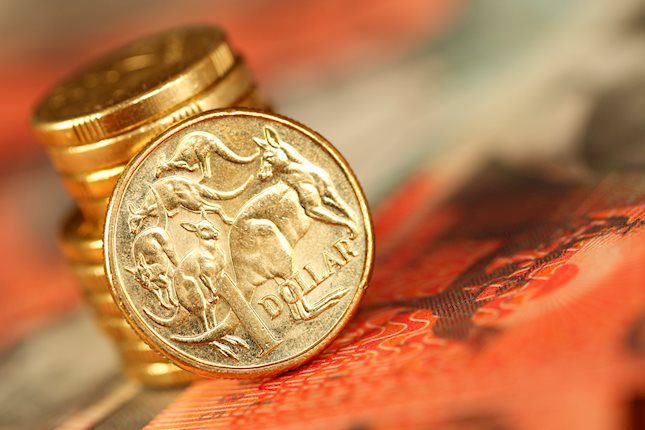The sugar rush from the Fed’s bold rate cut is still cascading through global markets, but after Wall Street’s post-cut euphoria, the local rally took a step back, giving way to a more sobering reality. The S&P 500’s surge has tempered as investors start to realize that, at some point, it’s not rate cuts but actual growth that’ll need to carry the weight of stock valuations. We’re in that weird zone of the cycle where everything feels out of sync. Wall Street is torn—some think the Fed might be behind the curve, while others argue there’s already too much easing baked into the cake. And let’s not ignore the constant background buzz about a potential tech bubble.
Quarter-end is just around the corner, and don’t forget—the November election looms large. With polls showing a tight race and betting markets giving Kamala Harris a slight edge, things look murky.
Against this backdrop, Fed Governor Waller wasted no time hinting that if things go south—say, if labour data worsens—the Fed could cut rates faster. But here’s the twist: if inflation heats up, they might slam the brakes instead. It’s a double-edged sword, and the markets are definitely taking notice.
The message is clear: if job data takes a dive, the Fed will go big again—and that’s sure to send shivers through the market. But just as quickly, hawkish Governor Bowman swooped in with a reality check, suggesting that this cut might be a premature victory lap.
And so the debate rages—50 or 25 basis points? The market is split right down the middle on whether November will bring another 50bp cut. Right now, traders are pricing in 75bps of easing by year-end. Meanwhile, inflation expectations are creeping up, but still hover near the Fed’s 2% target. Here’s the real kicker: if Trump starts pulling ahead convincingly in the polls, the markets will be watching both the Fed and the political landscape with eagle eyes.
Oil prices are creeping up too, partly fueled by renewed tensions in the Middle East, though year-on-year losses in crude have now exceeded 20% for two weeks straight.
Yet despite these headwinds, the equity market seems convinced the Fed has already nailed the soft landing—at least if you look at index levels. The S&P 500 is strutting at a lofty 21x forward earnings, with rosy assumptions of 10% growth in 2024 and 15% in 2025.
But hold on—the real issue beneath the surface is growth jitters. Unless US jobs data via the NFP channel holds up, those nerves aren’t going anywhere. No matter what the Fed says, the market could be in for a rude shock if the macro picture falters. Traders are eagerly awaiting this week’s reports on U.S. business activity, final Q2 growth revisions, and the latest consumer spending data—each of these could be a game-changer.
In Asia, Nikkei futures point to a decent bump at the local open, fueled by the yen’s recent slide, though higher yields on longer-term U.S. Treasury yields could cool some of that optimism.
Japan’s and China’s monetary policies were also in the spotlight last week, and both delivered mixed signals. The Bank of Japan, as expected, held rates steady but made it clear it’s not rushing to hike again. This sent the yen to its weakest close since early September, which gave Japanese stocks a nice boost.
Meanwhile, the People’s Bank of China threw a curveball by keeping rates unchanged, surprising markets that had been bracing for a cut. China’s struggling economy seems to be crying out for lower rates, and the Fed’s 50bp cut provided the perfect cover. However, the PBOC stayed put, likely to avoid looking too tied to U.S. policy. Whether this is just a temporary pause before a broader stimulus is rolled out remains to be seen, but for now, it’s done little to help China, as the offshore yuan hit a fresh 16-month high.
Flipping to the FX world, the yen had a wild week. After rallying past 140 per dollar for the first time in over a year, it tumbled back to close near 144, marking a 2% weekly loss—the worst since April. Many short-dollar profit-takings fueled the fire significantly as U.S. economic data outperformed expectations.
Looking at the nuts and bolts, the Fed’s timing on that aggressive rate cut is noteworthy, especially with inflationary pressures in services and housing still lingering. Powell downplayed the housing inflation issue during his post-FOMC presser, but it’s not going away.
On the bright side, downside risks to U.S. growth are fading fast. Initial jobless claims dropped another 12,000 last week to 219k—the lowest since May. And the Conference Board’s Leading Economic Indicators improved to -0.2%, no longer signalling recession. In case you missed it, U.S. equities are hitting record highs, interest rates have nosedived, and financial conditions have eased dramatically since August’s market scare.
With financial markets on a high and a new, lower rate path locked in, economists are boosting their forecasts for U.S. consumer spending and GDP growth. The Fed’s decisive move, combined with strong retail sales data, likely bolstered Q3 and Q4 spending estimates. As a result, the more robust growth outlook may keep the economic engine running even as the labour market cools.
But the lingering question is this: Is there enough slack in the economy for inflation to drift down to the Fed’s 2% target comfortably? Or will this economic surge put inflation back in the Fed’s crosshairs as their next big headache? Only time will tell. For now, the Fed has thrown the economy a lifeline—let’s just hope it doesn’t come with strings attached later.
SPI Asset Management provides forex, commodities, and global indices analysis, in a timely and accurate fashion on major economic trends, technical analysis, and worldwide events that impact different asset classes and investors.
Our publications are for general information purposes only. It is not investment advice or a solicitation to buy or sell securities.
Opinions are the authors — not necessarily SPI Asset Management its officers or directors. Leveraged trading is high risk and not suitable for all. Losses can exceed investments.
Recommended Content
Editors’ Picks

AUD/USD consolidates near 19-month peak as traders await US PCE Price Index
AUD/USD oscillates in a range below the 0.6900 mark, as traders opt to move to the sidelines ahead of the US PCE Price Index. In the meantime, the RBA's hawkish stance, the optimism led by additional monetary stimulus from China, the prevalent risk-on mood, and a bearish USD continue to act as a tailwind for the pair.

USD/JPY holds above 145.00 after the Tokyo CPI inflation data
The USD/JPY pair attracts some buyers to near 145.20 on Friday during the early Asian session. The pair gains ground near three-week highs after the Tokyo Consumer Price Index. The attention will shift to the US Personal Consumption Expenditures Price Index for August, which is due later on Friday.

Gold price holds steady near record peak; looks to US PCE data from fresh impetus
Gold price consolidates below the all-time high set on Thursday amid overbought conditions on the daily chart and the risk-on mood, though dovish Fed expectations continue to act as a tailwind. Bulls, meanwhile, prefer to wait for the release of the US PCE Price Index before placing fresh bets.

Ethereum investors show bullish bias amid ETF inflows and positive funding rates, exchange reserves pose risk
Ethereum traded around $2,640 on Thursday, up more than 2% following increased bullish bias among investors, as evidenced by ETH ETF net inflows and an uptrend in funding rates. However, investors may be wary of a potential correction from ETH's rising exchange reserve.

RBA widely expected to keep key interest rate unchanged amid persisting price pressures
The Reserve Bank of Australia is likely to continue bucking the trend adopted by major central banks of the dovish policy pivot, opting to maintain the policy for the seventh consecutive meeting on Tuesday.

Five best Forex brokers in 2024
VERIFIED Choosing the best Forex broker in 2024 requires careful consideration of certain essential factors. With the wide array of options available, it is crucial to find a broker that aligns with your trading style, experience level, and financial goals.